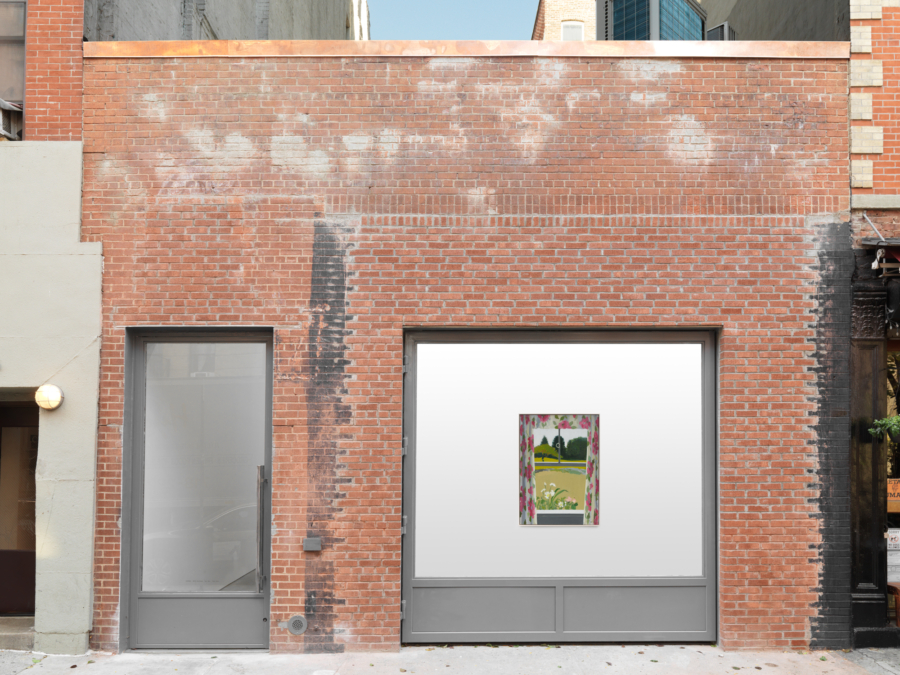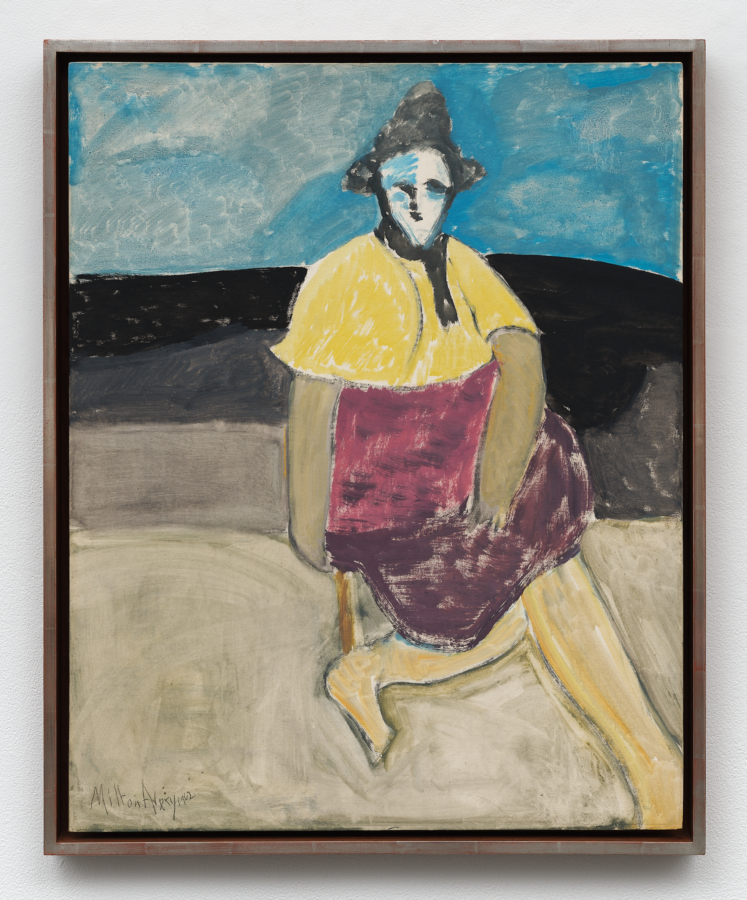
June 7, 2025
The nine paintings in Randy Wray’s exhibition at Karma are eerie works that tinker with realism, invoke the gothic, and utilize a wide variety of paint applications and textures. The viewer momentarily dips back into that delicious romantic moment of the Symbolists or the Viennese Secession while still engaging with thoroughly contemporary abstract works that acknowledge an anachronistic style without looking back. The artist accomplishes this feat by painting a vocabulary of form that plays with recognizable images of real things that are simultaneously abstract. In Herald (2023–25), the largest painting in the show, a non-stop barrage of vaguely familiar patterns assaults the viewer’s consciousness from a murky miasma of burnt ochres, Prussian blues, aquas, and greeny-yellows. The bulbous lip of an orchid appears to the left, some MRIs of the skull/brain to the right, and perhaps the outlines of a hip bone materialize on the upper left adjacent to the lurid petal. It is the stuff of nightmares, but one doesn’t feel inclined to look away. Instead, one looks closer, partly because the things we think we see are hiding behind a thickly encrusted luminous white form, which in contrast to the smoothly-laid-down paint of the blossom and brain scans, is forcefully painted and catches the light. For Wray, pattern and paint are two living tissues vying for prominence across the canvas; the fact that the characters of the drama range between bone, flower, fungus, and innards lends the whole series of nine paintings a mysteriously antiquarian narrative.
Part of why we can’t look away from these paintings is Wray’s insidious use of organic pattern as a jumping-off point for abstraction. There is often the presumption of symmetry in organic form. The artist highlights this notion by literally titling one of the works Bilateral (2023–25). The ubiquity of body scans in contemporary culture and life means we are immediately triggered into recognition by the distinctive series of shapes and colors that we discern as visual slices through the cavities of the body; but these in themselves are not abstractions. In Bilateral (2023–25), Wray places what appear to be two scans next to each other. He has manipulated the colors and textures so that one has a very thickly painted Gary Hume-like presence on the canvas in solid blue and deep green, while the other is more detailed and has a more diffuse and light brushstroke of various greens and browns. The two forms become symmetrical when placed end-to-end, even though the edges of the canvas cut the individual forms in such a way as to render them asymmetrical. A small brick-red shape which could be anything from a slice through the spinal cord to a moth-eaten maple leaf hangs from the top of the canvas, and an off-white vertical—seemingly hanging down from the central axis and intersection of the overlapping forms—is a phallic stand-in for the body we think we may be looking at. Wray plays a delightful game of implications, ghost limbs, and puns drawn from an overarching sensation of pareidolia.
If some things seem to look like memories and impressions, others are definitely what we think they are but are employed as decorative elements. Wray deploys bones in a wonderfully creepy way, kind of like the kitschy interior design in the cannibal’s salon in the original Texas Chainsaw Massacre (1974), where human bones hung playfully from the ceiling and adorned the furniture. In Pyrophoric Blossom (2022–25), Mind-Body (2023–25), and Sign (2023–25), the enigmatic arrangements that play across the canvas are linked, framed, or supported by lengths of bone and skeletal assemblages that serve as viable plot subtexts as well as interstitial filler. The work that kept drawing the eye back, though, was Tincture (2023–25), which seems to have achieved a level of blending of the organic and abstract as to leave one completely at ease with the artist’s tortured dreamscape. Wray has added in a patch of brushstrokes impersonating either petals or fungus (a gesture also appearing in Visitant [2022–25]), and rendered all of his bone or organ shapes into cartographic silhouettes, which receded into a crowded, whirling, bright distance. Unlike the other paintings in the series, Tincture (2023–25) not only harbors uncertain subject matter, but it also questions what the painting itself meant, flickering between every genre at once, sometimes landscape, sometimes still life, perhaps always a portrait.



